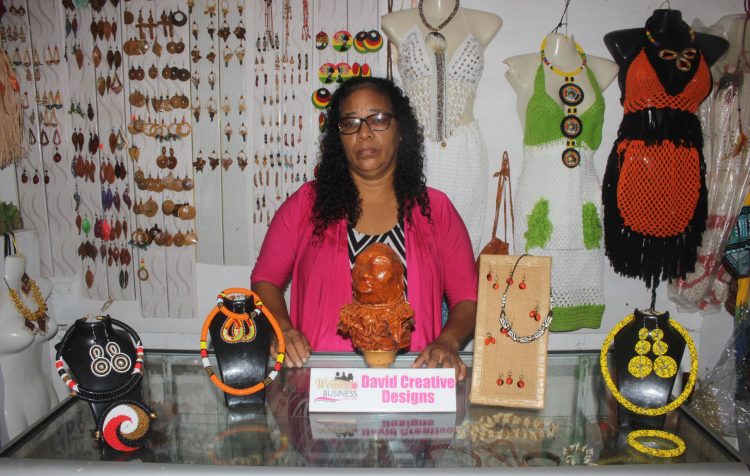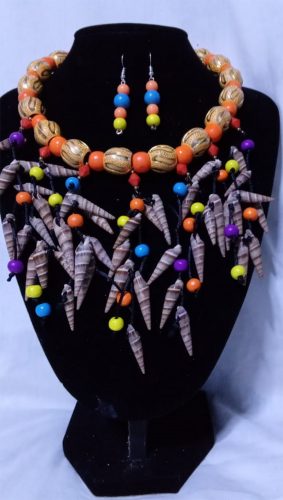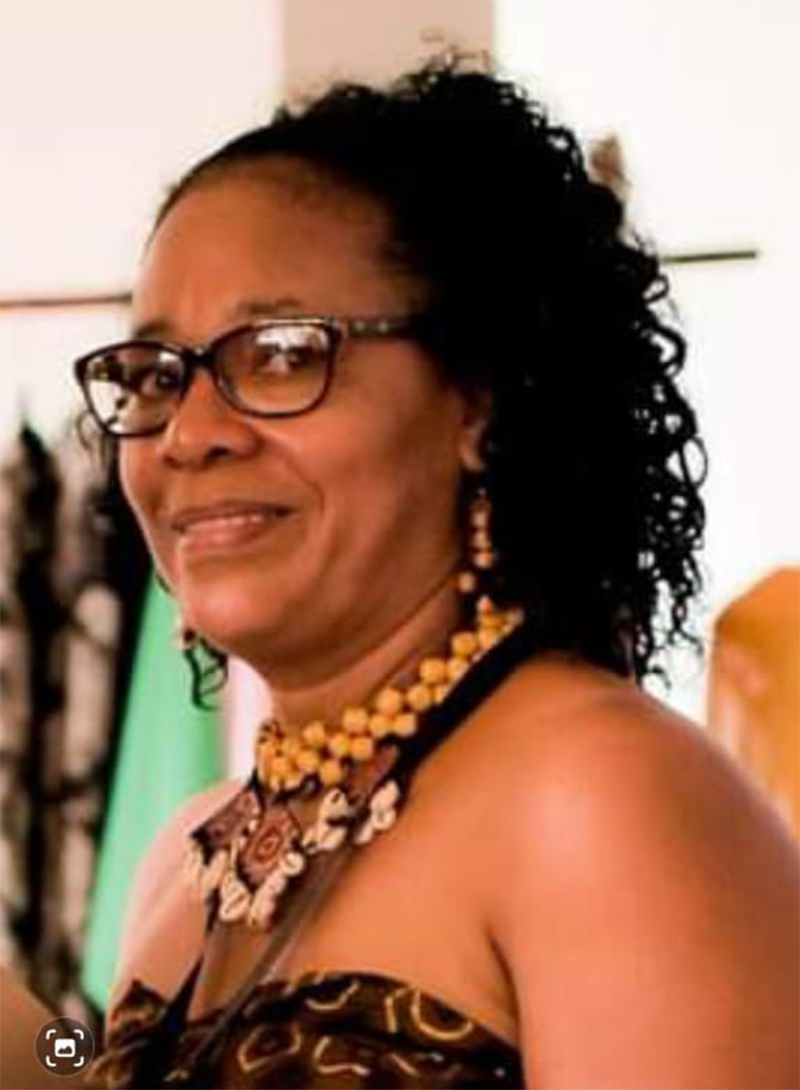As a creative being, Natasha David has arguably as much as any other Guyanese artist, won the right to ‘talk up’ her work. Its beauty, which so often can be discerned after even the most fleeting glance, reposes in its intricacy, its elegance and the completeness that she manages to infuse into what never comes across as anything less than careful thought and painstaking effort. That said, it is the sheer range of the types of creations that she turns out that is remarkable.
Not once during the hour or so that we spoke did she attempt to ‘sell’ any of her pieces. Instead, she appeared to be focusing on my reactions to my encounters with her work. At intervals she would proffer an insightful comment on the piece that I was contemplating and afterwards, go silent, so that we could move on.

The wooden necklace that adorned her chest was worn there as if it was intended to serve as the pièce de résistance, the template less than subtly deployed and from which she wished her standard to be measured. Occasional glances at the faultless pattern which the painstakingly prepared pieces of wood were assembled to create the necklace could hardly be helped. The necklace made the perfect case for parading her work as being among the standouts in the local craft industry.
There are myriad eye-catching features to Natasha David’s work. The one that arrested me most was the carefulness that would have had to be deployed to infuse aesthetically pleasing patterns into tiny creations: ear rings, broaches and wristbands, among a host of miniscule pieces, each of which boasted its own character, so that you found yourself gingerly contemplating her complete display rather than simply affording it a casual ‘once over’.
Some of the pieces were so tiny, so intricate and in the final analysis so attractive that you came to feel that those could not be fashioned from the clumsiness of fingers. The truth, when you enquire, is that they are, indeed, the product of extraordinarily gifted fingers.
There can be no question than that the complexity that lies in the beauty of Natasha’s work originates in a mind that is suffused with creative imagination. A look at her display stall at the recently staged Women In Business at the Pegasus Hotel suggests that much of her life’s work has been poured into churning out and afterwards, actualizing a remarkable array of creative concepts.
Occasionally, she would fashion bits of our conversation around particular pieces of her work, not seeking to ‘sell’ you the piece but to offer something of an excursion into how her creative mind works.
When we talked about her work she appeared interested in telling me about some of her contemporary body adornments fashioned out of sizeable pieces of glass that one would have thought difficult a transform into something meant to be worn next to the skin. She caught my look of apprehension and proceeded to volunteer a lesson in how to prepare the glass so that it could be rendered safe for its sensitive mission.

Creative pursuits, evidently, have almost always positioned themselves at the centre of her life. If she is not unconcerned about the material necessity to make money, one gets a sense that if she were afforded other less taxing and even more lucrative ways of making a living, she would vehemently decline.
She began, she told me, by fashioning model dolls, then clothing, then jewellery, working not from templates but from patterns woven inside her head. Over time, her interest metamorphosed into a desire to study art. That was when she took herself off to the Burrowes School of Art. That, she said, was rounded by a stint at the local Venezuelan Institute that introduced her to new genres of creative endeavour.
These days, Natasha’s Turkeyen home is a place of contemplation and of creation, the ‘nest’ in which some of her contemporary ideas are hatched.
Nor does the fact that her talents still remain unmatched by deserving rewards appear to bother her unduly. When the question arises she delicately skirts around the issue of what is widely felt to have always been an embarrassingly miserly patronage of the creative sector by the authorities.
What is missing in her instance, she says, is some prominent space from which to create public glimpses of her outstanding talent and to respond, not in a manner that allows just for her own material reward, but to create an enhanced awareness that Guyana’s good fortune transcends the highly touted billions of barrels of oil that are even now being fashioned into a transformational tool. The creative arts, she believes, too, can make their own contribution to what we in Guyana describe, sometimes quite loosely, as development.






